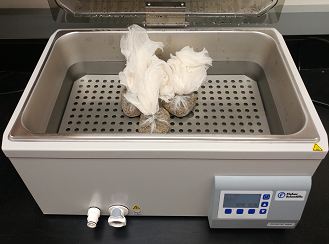
Growing vegetables from seed is a common practice for many home gardeners. Unfortunately, vegetable seed (even though it appears perfectly healthy) can sometimes be contaminated with disease-causing organisms, particularly disease-causing bacteria. Bacterial speck, bacterial spot, and stem canker of tomato, as well as bacterial spot of pepper and black rot of crucifers such as cabbage and broccoli are common bacterial diseases where pathogens can be introduced into a garden via contaminated seed. Making sure your vegetable seed is pathogen free is an important first step in preventing these diseases from being a problem.
Hot-water seed treatment is one method that you can use to eradicate, or at least reduce the level of pathogens (particularly bacterial pathogens), in vegetable seed. Some commercial vegetable seed companies routinely use this method (as well as other more stringent decontamination methods) to eradicate pathogens. Hot-water seed treatments are effective because hot water soaks into the seed for a brief time and kills disease-causing organisms, without killing the seed itself. Other common seed treatments (e.g., fungicide treatments) can also help reduce disease, but typically do not eliminate pathogens that have penetrated the seed coat.
Hot-water seed treatment works best for small seed. It is not as effective for large or extremely fragile seed, pelleted seed, primed seed (i.e., seed treated to speed germination), fungicide-treated seed, and old seed. When using hot-water seed treatments, treat only the amount of seed that you plan on planting. Treatment temperatures and durations will vary depending on the particular crop (see Table 1).
To most effectively hot-water treat seed, use a water bath (in home cooking often referred to as a “water oven”) with precise temperature and timing control. Such equipment will provide the most consistent and uniform heating, but unfortunately can be somewhat expensive. Alternatively (but much more of a challenge), you can try to use a large pan heated on a stove. In order for this method to work, you will need to use a precise thermometer to accurately and frequently measure any changes in temperature. In addition, you must mix the water thoroughly, adjust the stove settings appropriately and submerge the seed completely during the treatment process to ensure that the seed receive a constant and uniform temperature at all times. Water that is too hot may injure the seed; water that is too cold will not eradicate pathogens.
To hot-water treat seed, use the following steps:
- Wrap seed in a permeable cloth (e.g., cheesecloth);
- Thoroughly soak (removing any air) and pre-warm seed in 100°F tap water for ten minutes;
- Transfer seed to tap water heated to the crop-specific prescribed temperature (see Table 1);
- Place seed in cold tap water for five minutes to quickly end the heat treatment;
- Spread seed out on a paper towel or screen to air dry;
- Apply fungicide seed treatments according to the manufacturer’s instructions (optional).
Table 1. Hot-water treatment temperatures and timings by crop*
| Crop | Temperature (°F) | Time (minutes) |
|---|---|---|
| Brussel Sprouts | 122 | 25 |
| Broccoli | 122 | 20 |
| Cabbage | 122 | 25 |
| Carrot | 122 | 20 |
| Cauliflower | 122 | 20 |
| Celeriac | 118 | 30 |
| Celery | 118 | 30 |
| Chinese Cabbage | 122 | 20 |
| Collards | 122 | 20 |
| Coriander | 127 | 30 |
| Cress | 122 | 15 |
| Cucumber | 122 | 20 |
| Eggplant | 122 | 25 |
| Kale | 122 | 20 |
| Kohlrabi | 122 | 20 |
| Lettuce | 118 | 30 |
| Mint | 112 | 10 |
| Mustard | 122 | 15 |
| New Zealand Spinach | 120 | 60-120 |
| Parsley | 122 | 30 |
| Pepper | 125 | 30 |
| Radish | 122 | 15 |
| Rutabaga | 122 | 20 |
| Shallot | 115 | 60 |
| Spinach | 122 | 25 |
| Tomato | 122 | 25 |
| Turnip | 122 | 20 |
For more information on hot-water seed treatment:
Contact the University of Wisconsin Plant Disease Diagnostics Clinic (PDDC) at (608) 262-2863 or pddc@wisc.edu.
Authors: Sean Toporek and Brian Hudelson, UW-Madison Plant Pathology
Last Revised: 03/01/2024
D-number: D0064
References to pesticide products in this publication are for your convenience and are not an endorsement or criticism of one product over similar products. You are responsible for using pesticides according to the manufacturer’s current label directions. Follow directions exactly to protect the environment and people from pesticide exposure. Failure to do so violates the law.
Thanks to Diana Alfuth, Amanda Gevens and Christy Marsden for reviewing this document.
A complete inventory of UW Plant Disease Facts is available at the University of Wisconsin-Madison Plant Disease Diagnostics Clinic website: https://pddc.wisc.edu.
Send a Plant Sample for Analysis
Be cautious when self-diagnosing plant health issues. Very few diseases can accurately be diagnosed by eye.
Contact the UW Plant Disease Diagnostics Clinic (PDDC), and for a small fee, clinic staff can examine a plant, determine the cause of the disease/disorder, and provide advice on how to control or prevent the issue.
Download Article





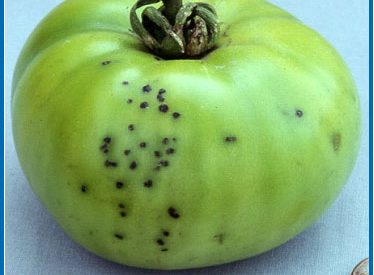 Bacterial Speck of Tomato
Bacterial Speck of Tomato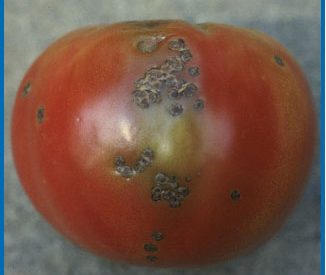 Bacterial Spot of Tomato
Bacterial Spot of Tomato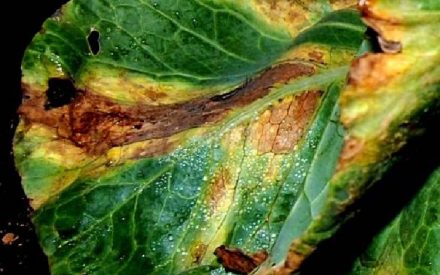 Black Rot of Crucifers
Black Rot of Crucifers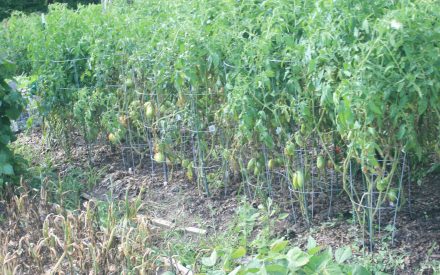 Home Vegetable Garden Fungicides
Home Vegetable Garden Fungicides


